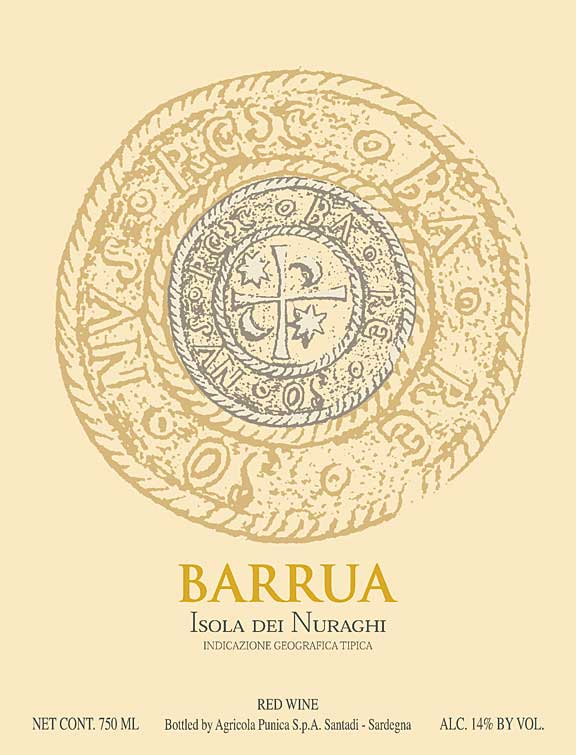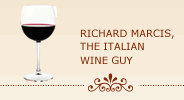The Perfect Case of Italian Wines to Tide You Through 2021
This article reviews a dozen pleasurable, out-of-the-ordinary Italian wines that will give lift to your plans to escape the confining doldrums of the Covid-19 pandemic while also, hopefully, expanding your wine horizons.
Since Italy produces a lot of really good wines the competition for a spot on this short list of 12 is really tough. There are no set, formal criteria to the selection process other than my own sense of quality along with an interest in regional diversity and some diversity in prices.
he end result is a list that includes some high-visibility, often expensive wines that consistently garner praise from wine cognoscenti and the general wine-buying public alike while others are not especially well-known wines that fly under the radar and don’t receive a lot of attention in the popular wine press.
But all wines selected rank high on a quality-to-price basis across the price spectrum. While some wines are considerably more expensive than others, I strived for an equitable distribution of wines at different price points.
Toward this end the wines selected are distributed within 3 price categories that span the price spectrum: wines under $30; wines priced from $30 to $70; and wines over $70. The wines range in price from $19 to $105 and the average per-bottle price is $57.
The wines are listed alphabetically by producer within each price category.
Under $30
Avignonesi, Vino Nobile di Montepulciano 2016 (about $26)
The Avignonesi winery is one of the oldest in southern Tuscany. Its long history and dedicated and earnest approach to winemaking has earned the winery a well-deserved reputation as one of top-echelon producers in southern Tuscany.
Avignonesi’s 2016 Vino Nobile is made entirely of Sangiovese grapes sourced from several of Avignonesi’s vineyard sites in the Vino Nobile di Montepulciano DOCG appellation. Natural yeasts are used to initiate the fermentation and the grapes are fermented on the skins for 20 to 30 days depending on individual grape batches. The wine is aged for 18 months in oak barrels and receives some additional ageing in the bottle prior to release for sale.
This is a soft, nicely-rounded, medium-bodied wine with elegant aromas of ripe red berries followed by soft, plummy flavors with a hint of blackberry jam complemented by silky tannins. While ready to drink now, the wine will age well for at least 5 to 7 more years.
COS, “Lupo di Nero” Nero d’Avola IGT Sicilia 2018 (about $28)
COS is a biodynamic winery located near Vittoria in southeastern Sicily. While it produces a range of wines it tends to focus on wines made with the area’s two most popular indigenous red varieties - Nero d’Avola and Frappato.
Consistent with winery’s goal of minimizing human intervention in vineyard and cellaring operations and forsaking use of oak ageing, COS wines generally exhibit good definition and sense of place.
The Lupo di Nero (which translates as “black wolf”) is aged for a total of 18 months in cement tanks and bottles. It is full-bodied with velvety tannins and wonderfully robust with juicy black cherry, plum and fig flavors. Alcohol is 12.5 percent.
Marche si Frescobaldi, “Nipozzano” Chianti Rufina Riserva DOCG 2016 (about $19)
si Frescobaldi, “Nipozzano” Chianti Rufina Riserva DOCG 2016 (about $19)
This wine from Frescobaldi’s Castello di Nipozzano estate in the Rufina sub-zone of Chianti is a real charmer with the added bonus of a modest price tag.
It is made primarily of Sangiovese with small amounts of other red varieties. The wine is aged for 24 months in oak barrels with 3 additional months in the bottle prior to release.
It is full bodied, rich and complex and ready to drink now but will continue to improve with some further ageing.
$30 to $70
Castello della Sala – Antinori, Cervaso della Sala 2018 (about $58)
Cervaro della Sala is a white wine produced by Castello della Sala in Umbria which is part of the storied Marchese Piero Antinori’s extensive wine empire.
Made primarily of Chardonnay aged in barriques with a splash of Grechetto that is aged in steel tanks, it is a distinct, complex and structured wine that ranks as one of Italy’s finest white wines.
It is flavorful yet elegant and – unlike most white wines – has good ageing potential and is a serial recipient of Gambero Rosso’s prestigious Tre Bicchieri award.
Col d’Orcia, Brunello di Montalcino 2015 (about $54)
As I'm sure you're aware, Brunello di Montalcino is Tuscany’s most-acclaimed wine and is generally considered, along with Barolo, to be Italy’s best red wine
For added luster it is worth noting that 2015 was one of the great vintages in the Montalcino area and Tuscany in general.
The 2015 Col d’Orcia Brunello deep and full-bodied with a multi-dimensional flavor profile that is bursting with ripe dark berry and plum flavors enhanced with some savory balsamic notes. It has Brunello’s benchmark full, dense mouthfeel with firm tannins that impart complexity and structure to the wine.
While drinkable now, this 2015 gem is still a work in progress with lots of room for future evolution with the potential to be even more enjoyable and complex in 5 to 10 years.
Elena Fucci, “Titolo” Aglianico del Vulture 2016 (about $38)
The Elena Fucci estate consists of a single, 15-acre vineyard planted in the mineral-rich volcanic soil on the high slopes of Mount Vulture in the northwestern corner of the Basilicata region in southern Italy. This vineyard is planted exclusively with Aglianico grapes used for the production of Titolo, the estate’s only wine.
The vineyard is farmed organically and the hand-selected Aglianico grapes are fermented in temperature-controlled stainless-steel tanks and undergo full malolactic fermentation in new French oak barriques. There is no fining or filtration. The wine is then aged for 12 months in first and second passage French oak barriques and receives an additional 12 months ageing in the bottle before release to the market.
stainless-steel tanks and undergo full malolactic fermentation in new French oak barriques. There is no fining or filtration. The wine is then aged for 12 months in first and second passage French oak barriques and receives an additional 12 months ageing in the bottle before release to the market.
The 2016 Titolo has a dark and intense ruby red color with aromas redolent of dried herbs, dark cherries and blackberries. The wine is deep, structured yet exceptionally refined. The wine’s ripe dark fruit flavors help soften the edges of the firm tannins and the salient acidity provides overall balance and structure to the wine.
This Titolo will age gracefully for at least another decade.
Agricola Punica, “Barrua” Isola dei Nuraghi IGT 2015 (about $48)
Agricola Punica is located in the southwestern corner of the island of Sardinia off the western coast of mainland Italy. The estate produces only two wines - Barrua and Montessu - both of which are Carignano-based blends. Of Spanish origin, Carignano is perfectly suited to the dry, sun-drenched terrain of southwestern Sardinia. This late-ripening grape produces deeply colored, warm and spicy wines with naturally high acidity and assertive tannins and as such is often blended with other varieties to help soften the tannins and add complexity.
 The 2015 Barrua is primarily Carignano with some Cabernet Sauvignon and a splash of Merlot. The grapes are fermented in stainless steel tanks and the wine is aged in a combination of new and used French oak barrels for approximately 18 months and bottle-aged for an additional 12 months.
The 2015 Barrua is primarily Carignano with some Cabernet Sauvignon and a splash of Merlot. The grapes are fermented in stainless steel tanks and the wine is aged in a combination of new and used French oak barrels for approximately 18 months and bottle-aged for an additional 12 months.
The wine has a deep, dark color and a gentle swishing of the glass releases a rich mixture of black cherry, sage and rosemary aromas. It is deeply-textured and full-bodied with soft tannins and brimming with mouth-coating, ripe dark fruit flavors with some cedar and wild herb notes. Its 15 percent alcohol provides ample tension and drive throughout.
Secondo Marco, Amarone della Valpolicella Classico DOCG 2011 (about $65)
Using Amarone’s traditional blend of Corvina, Corvinone and Rondinella and a lengthy appassimento process involving use of grapes that are partially dried over the course of 3 months, Secondo Marco has crafted a concentrated and complex yet elegant and food-friendly wine. The wine is matured in large Slavonian oak casks for 42 months and spends 12 months in the bottle before release.
While Amarone is by definition a wine of drama with high alcohol and immense depth, Marco’s 2011 Amarone still manages to be approachable and easy to enjoy with velvety, soft-edged tannins that gently support the abundant baked cherry, plum and balsamic-edged flavors. It has an impressive textured mouthfeel and yet is not heavy but rather vibrant and well-balanced and wears its alcohol (15.5 percent) lightly.
This rich and full-bodied wine requires equally hearty flavors at the dinner table such as rich pasta dishes, grilled red meats, lamb, rich vegetable and meat stews and aged, firm cheeses.
Over $70
Castello dei Rampolla, Sammarco” Toscana IGP 2015 (about $85)
Sammarco was one of the earliest Super-Tuscan wines to come to market in the early 1970’s although nobody referred to it as such at the time. Its initial release garnered wide critical acclaim and Sammarco today is generally recognized as one of Tuscany’s signature collectible wines.
Sammarco is a Bordeaux-style blend of primarily Cabernet Sauvignon with some Merlot and a splash of Sangiovese. The grapes are separately vinified in concrete for 3 months after which the wine is aged in a combination of barriques and large format oak casks for 12 to 15 months and another 18 to 24 months in the bottle prior to release.
The 2015 Sammarco is aromatic and sophisticated and its depth and concentration makes it as seductive as it is intense. An impressive offering from one of Tuscany’s most respected producers.
Cavallatto, “Bricco Boschis” Barolo DOCG 2015 (about $80)
The Cavallatto winery is located just outside the gates of Castiglione Falletto in the eastern valley of the Barolo zone and produces a number of vineyard-specific Barolo wines as well as a few other red and white wines from local varieties.
This Barolo is made entirely with Sangiovese grapes from the estate’s 15.5-acre, prime south-facing Bricco Boschis vineyard. The grapes are fermented with indigenous yeasts and the wine aged for a little over 3 years in large-format Slavonian oak casks with an additional 6 to 12 months in the bottle before release for sale.
2015 was a near-perfect vintage in the Piedmont region and the sunny and warm mid-summer provided enhanced depth of fruit flavors in the ensuing wines.
Cavallotto’s 2015 Bricco Boschis is well-structured with ripe black fruit flavors, good acidity, firm but not daunting tannins and an exotic mix of spices that linger on the finish. It has 14.5 percent alcohol.
While drinkable now, this Barolo is made to go the distance and will continue to improve in the bottle over the next 8 to 10 years.
Nino Negri, “5 Stelle” Sfursat di Valtellina 2013 (about $80)
Nino Negri is one of northern Italy’s premier wine estates with an established reputation for producing quality Nebbiolo-based wines and its “5 Stelle” Sfursat di Valtellina is the estate’s top-of-the-line offering. It is a full bodied, rich and high-alcohol wine that utilizes partially-dried grapes similar to the appassimento process  utilized in the production of the Veneto region’s famed Amarone della Valpolicella wines.
utilized in the production of the Veneto region’s famed Amarone della Valpolicella wines.
The 5 Stelle (5 stars) Sfursat is made entirely of Nebbiolo (known locally as Chiavennasca) grapes hand-selected from the estate’s best vines. It is produced only in the best years and in limited quantities and like the best Amarone wines, it requires many years’ ageing to achieve optimal maturity. It is a serial recipient of Gambero Rosso’s prestigious Tre Bicchieri award, anointing it as one of Italy’s best wines.
The 2013 “5 Stelle” Sfursat is dry, velvety and full-bodied with complex sweet spice aromas and pulses with dense, generous raspberry puree and black cherry flavors.
This is a wine of drama that impresses with its personality, richness and elegance.
Paolo Bea, “Pagliaro” Montefalco Sagrantino DOCG 2012 (about $105)
Antica Azienda Agricola Paolo Bea is a small estate located in the wine-centric community of Montefalco in central Umbria. The estate is known for producing full-bodied, rich, complex and long-lived wines as well as for its traditional, artisanal approach to wine making.
Montefalco Sagrantino from the Pagliaro vineyard is Paolo Bea's flagship wine. It is made entirely of organically-grown Sagrantino grapes harvested by hand in the latter half of October. The grapes undergo extended (40-day) maceration on the skins using only natural yeasts for fermentation. Afterwards, the wine is aged in stainless steel followed by 2 years in large, used Slavonian oak casks. The wine is then bottled, unfined and unfiltered, where it rests for an additional year prior to release.
Paolo Bea’s 2012 Pagliaro exhibits terrific structure, balance and complexity. It opens with enticing aromas of ripe black cherries, balsamic and subtle cedar notes followed by a deep core of ripe blackberry and raisiny dried-fruit flavors supported by plush, layered tannins.
Even though it has a weighty structure with an almost chewy texture and mouthfeel it still maintains a sense of style and structure. The wine checks in with 15 percent alcohol.
The 2012 Pagliaro will evolve and become more compelling over time as it has the structure and tannic backbone to go the distance for at least another decade or two.
Yes, Paolo Bea's Pagliaro Sagrantino is outlandishly expensive - but it's worth every penny!
©Richard Marcis
March 7, 2021
Return to Wine Reviews and Musings
Return to italian wine reviews
Help keep this website ad-free and independent.
Consider making a contribution to support the work of WineWordsWisdom.com.



